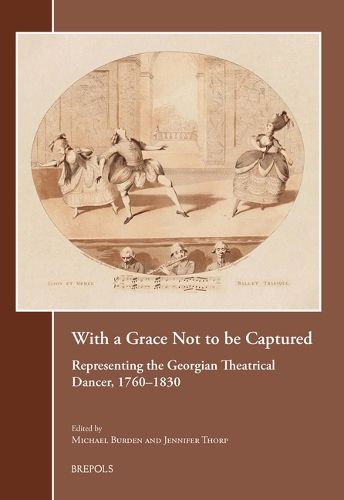Readings Newsletter
Become a Readings Member to make your shopping experience even easier.
Sign in or sign up for free!
You’re not far away from qualifying for FREE standard shipping within Australia
You’ve qualified for FREE standard shipping within Australia
The cart is loading…






If dance on the London stage can be said to have a ‘golden age’, it might be thought to be the years between 1760 and 1830. The changes included the arrival on London stage of ballet d'action, and the appearance of Vestris and Noverre. Dance in the theatre and the opera house continued to be essential to the financial success of any season, and it was a ubiquitous element in the London theatrical season both in dramatic works and as entr'acte pieces. These years also saw important changes that affected theatrical dance and thus public perceptions of celebrity dancers. Despite this, and in comparison with other performers, far fewer portraits of dancers were produced. This can be explained in part by a visual culture that privileged a particularly national view of celebrity. As one of the contributors argues in this volume, the rhetoric of a ‘British school of art’ contributed to marginalizing foreign singers and dancers on the London stage, as well as other immigrant artisans who had a major role to play in the economics of eighteenth-century London leisure life. Through the examination of series of major dancers, this volume examines the way in which the images created represented a dancer’s image, which was then often exploited through the medium of print. The images discussed in the volume include formal and informal portraits, portraits in character, prints, and caricatures.
$9.00 standard shipping within Australia
FREE standard shipping within Australia for orders over $100.00
Express & International shipping calculated at checkout
If dance on the London stage can be said to have a ‘golden age’, it might be thought to be the years between 1760 and 1830. The changes included the arrival on London stage of ballet d'action, and the appearance of Vestris and Noverre. Dance in the theatre and the opera house continued to be essential to the financial success of any season, and it was a ubiquitous element in the London theatrical season both in dramatic works and as entr'acte pieces. These years also saw important changes that affected theatrical dance and thus public perceptions of celebrity dancers. Despite this, and in comparison with other performers, far fewer portraits of dancers were produced. This can be explained in part by a visual culture that privileged a particularly national view of celebrity. As one of the contributors argues in this volume, the rhetoric of a ‘British school of art’ contributed to marginalizing foreign singers and dancers on the London stage, as well as other immigrant artisans who had a major role to play in the economics of eighteenth-century London leisure life. Through the examination of series of major dancers, this volume examines the way in which the images created represented a dancer’s image, which was then often exploited through the medium of print. The images discussed in the volume include formal and informal portraits, portraits in character, prints, and caricatures.